The Lives of Stars - An epic multi-billion year journey
Without Stars, the universe will be a dark void. This is their extraordinary journey, from birth to death.
Stars can take many different paths, but the majority are main sequence stars between 0.2 and 8 solar masses. Under it, the smallest stars become brown dwarfs (which aren't really stars). Above it, we have Giants - they burn bright but die soon.
Our Sun is a middle-aged main sequence star. This is about the lives of gazillions of stars just like our Sun scattered all over the universe. There are many types of main sequence stars, which eventually leave the main sequence to different fates. We will follow the life of the typical star.
All images courtesy of NASA, except where mentioned.

The Hertzsprung-Russell Diagram - and the paths that stars take. Our Sun is a main sequence star in the 1 VL / 5600K range, and will become a Giant when it leaves the main sequence towards the end of its life.
Source: Atlas of the Universe
Phase 0 - Stellar Remnants
A new star forms from the remnants of a dead star. Different stars meet different fates, of course. Some die a dramatic death, exploding into a shell of dust, gas and a variety of elements, while others gently fade away expelling matter.
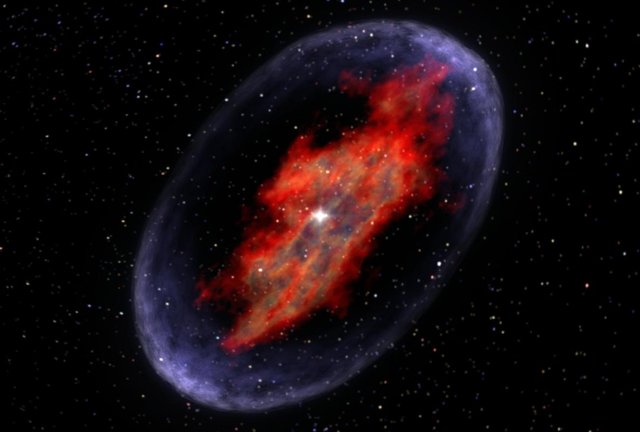
A Supernova from a massive star. The molecular cloud is raw material for a new star.
Phase 1 - Protostar
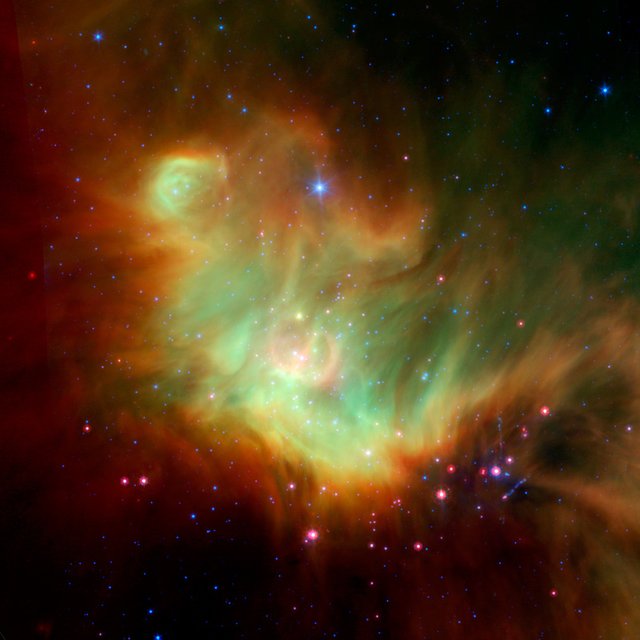
Stellar remnants disperse into molecular clouds. Drawing from molecular clouds, gravity starts doing its thing. Matter starts clumping together. The Protostar is the most important phase of stellar evolution and decides the eventual fate of the star.
Phase 2 - Nucleosynthesis
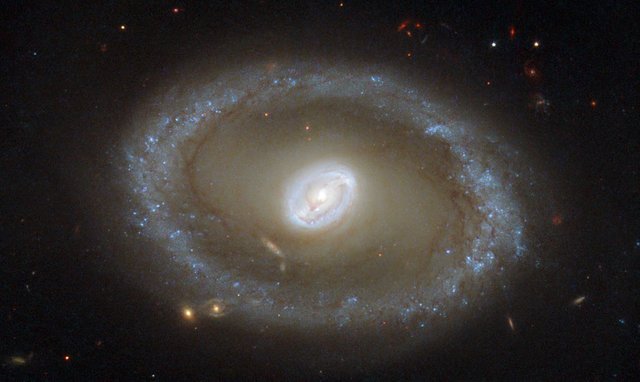
As the protostar grows, it draws in matter from greater distances. Once it becomes dense and hot enough at the core - 10 million Kelvin - nuclear fusion starts. Hydrogen starts fusing into Deuterium first, and quickly after, into Helium. Most of the fusion happens through a process called proton-proton (p-p) chain. Four Hydrogen nuclei undergo a chain of reactions which end up with Helium. This process generates incredible amounts of energy, which is what fuels the star.
Phase 3 - Hydrogen fusion
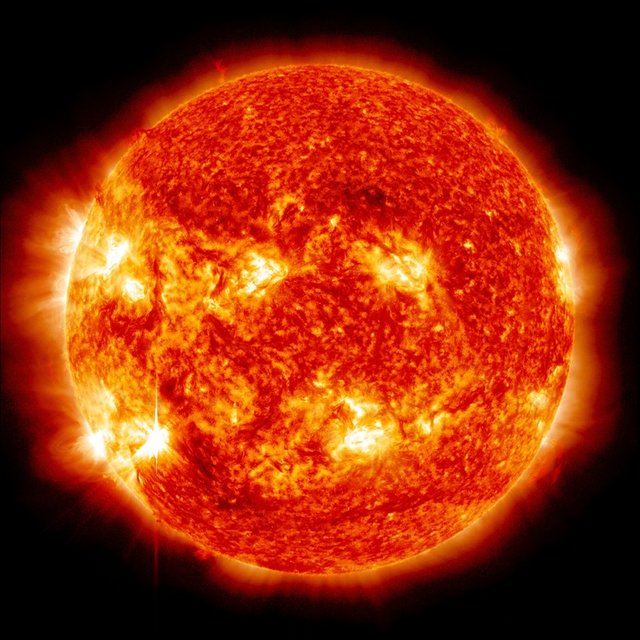
This is the longest and most stable part of a star's life. This is where the star continues Hydrogen nucleosynthesis, tirelessly fusing Hydrogen into Helium. Consequently, Helium starts building up in the core.
How long will this stability last? It depends entirely on the stellar mass. A mass of our Sun will last nearly 10 billion years. A star 5 times the mass of our Sun will run out in a few hundred million years. A mass 1/5th our Sun will continue burning for trillions of years.
Phase 4 - Red Giant Branch
Eventually, the star will run out of Hydrogen in its core. Instead, fusion will start on the innermost layers of the Hydrogen shell outside the core, dumping Helium back into the core. At this stage, the gravity from the core can no longer contain the increased radiation pressure of the Hydrogen shell.
As a result, the star's outer Hydrogen shell expands dramatically. This is a relatively slow process, lasting roughly 5%-10% of the main sequence life. At the end, the star will be up to hundreds of times its original size, becoming cooler in the process. The star has now left the Main Sequence and become a Red Giant.
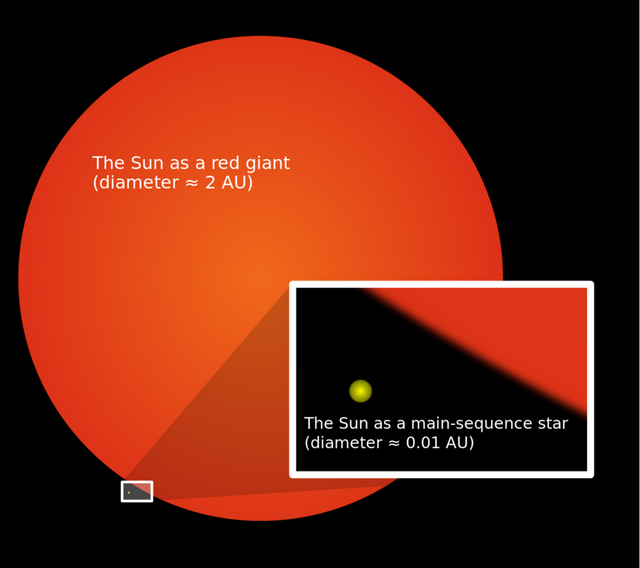
Source: Wikimedia Commons
Our Sun will leave the main sequence about 5 billion years from now. It may grow so large that it will envelop the Earth! That's over 200 times it's original radius, millions of times the volume. For our Sun, it will take 750 million years as a Red Giant to reach this peak.
Phase 5 - Helium Fusion
As a Red Giant, the star is fusing Hydrogen from the inner shell, dumping Helium into the core. The Helium core is constantly growing and heating up. Eventually, it will reach 100 million Kelvin, at which point the Helium will fuse into Beryllium, and then to Carbon and Oxygen. This is the Triple Alpha process - a rapid and dramatic process relative to the stable and slow Hydrogen fusion.
Helium fusion starts in a matter of minutes or hours - called the Helium Flash event.
With a core fusing at a brisk pace once again, the star will contract back into a smaller size, though still vastly larger than the original main sequence size.
Hydrogen fuses into Helium, Helium fuses to Carbon at a faster rate, over 100 million years in the case of our Sun.
Phase 6 - Asymptotic Giant Branch
Of course, like the Hydrogen ran out, the Helium in the core will run out as well. Eventually, the core is Oxygen and Carbon, and core Helium fusion comes to a halt. Once again, the star starts expanding - this time to even greater volumes than the Red Giant branch. Our sun is expected to swallow Mars in this stage.
There are pulses of Helium flashes on the shells every few thousands of years as Helium fusion continues on the shell.
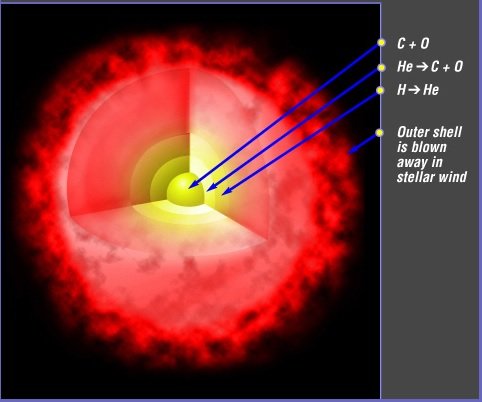
Source: BestThinking.com
Phase 7 - White Dwarf and Nebula
It's not sustainable, however, as the radiation pressure from the now Helium shell starts greatly exceeding the degenerate Oxygen-Carbon core's gravitational pull. The core never reaches the billion Kelvin mark needed to fire off Carbon fusion either.
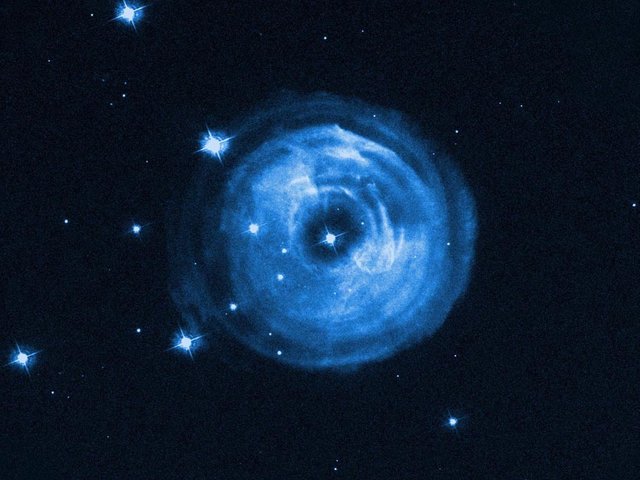
So, the Helium and Hydrogen shell of the star is gently blown away by stellar wind, to form a Nebula, exposing the extremely dense and hot Oxygen-Carbon core. The nebulae clump together to form molecular clouds called stellar nurseries, which will birth new stars.
This remaining core is now a White Dwarf.
The White Dwarf is no longer a star, but a degenerate. Our Sun will boil down to the size of the Earth in this phase.
Phase 8 - Black Dwarf
Composed entirely of electron-degenerate Oxygen and Carbon with no chance of fusion, the White Dwarf radiates away its heat over trillions of years. Till the point where it's nothing but a black shell of Carbon and Oxygen - a black clump of matter drifting through time and space.
There are no black dwarfs today as the universe is far too young for them to have evolved.
And we are all made of starstuff! Nice post, a trillion stars out there living their own lives..
We are made of more exotic stuff than just Carbon and Oxygen which the stars in this post ends with. :) More on that in my next post.
There are 500 trillion stars in the Milky Way alone! Out in the observable universe it's more like a trillion trillion trillion stars! And who knows what lies beyond the observable universe...
Could all those other stars the same size as our sun have planets around them to we can't see yet?
Many do. Exoplanet research has taken a huge step forward in recent years with the Kepler satellite. While the planets are too small to see, they can be indirectly detected by the amount of light they block as they pass by the sun, etc. So far thousands such planets have been discovered, many of them in the habitable zone. I hope to write a post on exoplanets in the future. :)
@liberosist Excellent work! I loved this post. Keep up the great #science work.
All Star Post @liberosist!
so interesting
great information here, hope I'm gone by the time the sun swallows up the earth! lol
Don't worry about it, we will be long gone before that!
Or even better, our minds are uploaded onto a supercomputer and we're freed from our biological bodies. By the time our sun dies, we're long gone - traveling the universe and meeting other intelligent life forms.
Earth 1,75 billion years a. d.
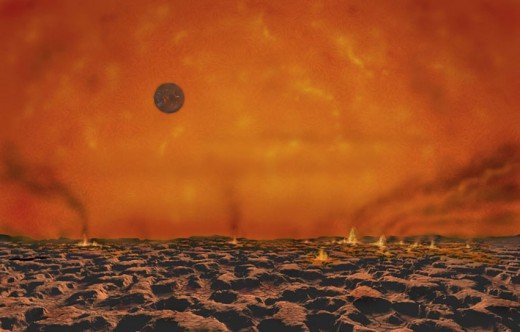
Elon Musk knows what he's doing
It's not that soon! That'll probably happen 3.75 billion years AD. But yeah, we'll be long gone by then :)
Numbers vary from 1.5 to 3.75 billion.. Good error margin hehe. But all agree that in the next 100 years nothing will happen. Good news!
It's not happening in the next 4 billion years - for sure. The earliest estimates for going Red Giant is 5 billion years from now.
But yes, the Earth will be otherwise very different in 1.5 billion years.
Love your work @liberosist and thank you for the upvote on our intro post, hopefully you like our first write up which is up now. Look forward to seeing more of your stuff and am now following. Thanks again!
Thanks! Will check it out.
It's so interesting to see even the visual of stars, I appreciate how you also incorporated the bigger stars like the sun as not all stars are little twinkles in the sky. Good job @liberosist!
Sun is actually hardly a big star. More like small to big. And those little twinkles are often millions of times bigger than our Sun. :)
But I see where you're coming from.